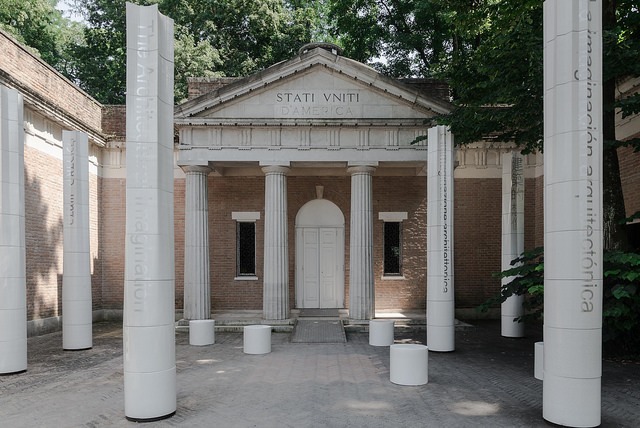Art Deco in origin and laid out on two formal Beaux Arts axes, the Norton Gallery and School of Art opened in 1941 on Dixie Highway in West Palm Beach.
Over the years, it was added onto until its original concept was obscured. That is, until earlier this year – when Foster + Partners’ efforts to untie its Gordian Knot were unveiled.
“There’s now a circulation throughout the museum that’s clear and rational, and that was achieved by re-establishing the Beaux Arts axis order, diluted over expansions in the 1990s and 2000s,” says John Backman, Project Director at The New Norton. “Now it’s intuitive and clear.”
As is the museum’s entrance on Dixie Highway, flanked today by Oldenburg and van Bruggen’s “Typewriter Eraser” and a 43-foot-tall Banyan tree. Before, the entry had been less obvious, due to the additions.
“Driving by you wouldn’t have sense of a world-class institution with a world-class collection,” he says. “Now, it’s impossible to confuse it with anything but an institution displaying treasures.”
These are no small treasures. Their names are legendary: Homer, O’Keefe, Pollock, Hassam, Motherwell, Calder and Man Ray among them.
And that’s only for the galleries inside. Outside, a former southern entrance has been replaced with a sumptuous sculpture garden designed by Foster, his first effort at landscape architecture.
“The way he laid out garden is interesting – he’s overseeing it as a continuous space with sculpture placed so you see one next to another,” he says. “He thought that by laying it out this way, these particular pieces of art could be experienced in their own space.”
They’re contained in outdoor rooms, where circulation between them is like that inside the building, sight lines making direct connections between art inside and sculpture outside. The indoor/outdoor relationship is a fundamental feature of the design.
“The Harris Sculpture Gallery stitches the two together with its heroically large glass pieces that are 15-and-a-half feet tall, and ten-feet wide,” he says. “When you’re in the Harris Gallery, it’s magnificent looking out – and also looking back in.”
So here we have it all: A 1941 Beaux Arts plan restored by a modern master – and an integration of indoors and out, for maximum enjoyment of paintings and sculpture.
For more, go here.
[slideshow id=1995]



